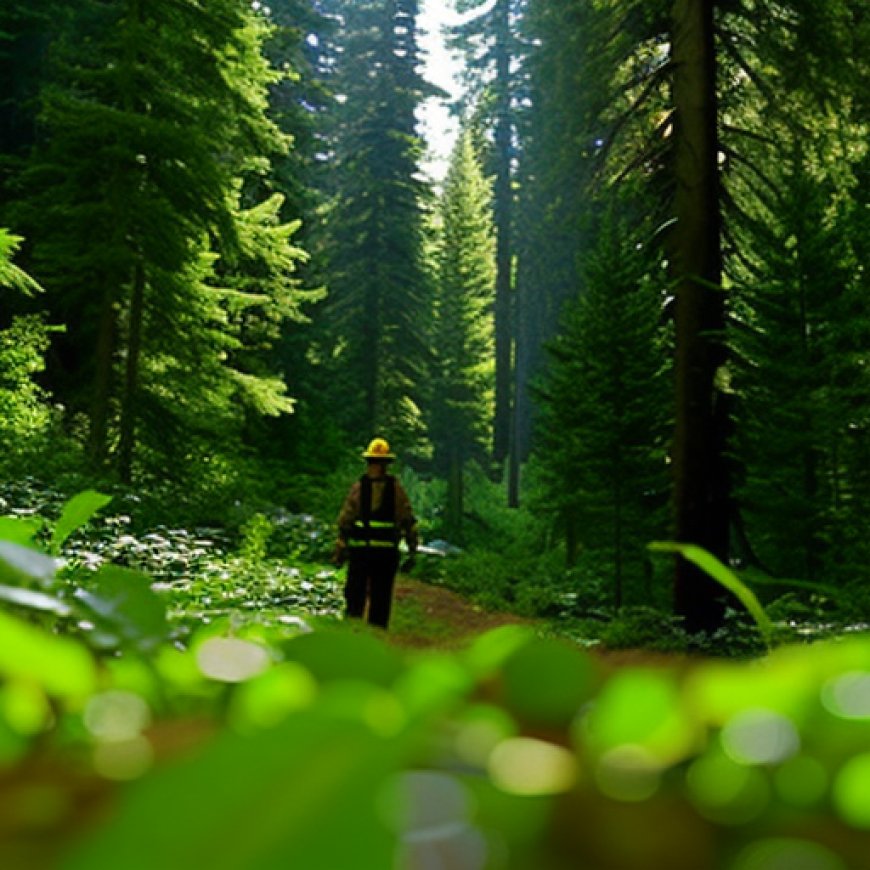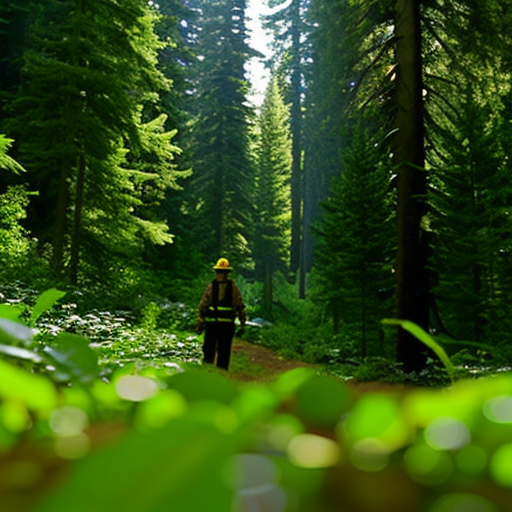USDA Forest Service invests $20M to restore forests, reduce wildfire risk, and create jobs in 18 states | US Forest Service
USDA Forest Service invests $20M to restore forests, reduce wildfire ... USDA Forest Service


U.S. Department of Agriculture’s Forest Service Invests $20 Million in Wildfire Risk Reduction and Forest Restoration Projects
Today, the U.S. Department of Agriculture’s Forest Service announced that it is investing more than $20 million for projects that reduce wildfire risk and restore healthy forests while creating jobs through USDA’s Good Neighbor Authority. The Good Neighbor Authority allows the USDA Forest Service to enter into agreements with state forestry agencies to complete critical management work that keeps our forests healthy and productive.
Investments to Achieve Sustainable Development Goals
- Protect communities
- Improve forest health
- Reduce invasive plants
- Improve watersheds
- Create job opportunities in rural areas
The investments, made possible by the Bipartisan Infrastructure Law, will fund projects and leverage state resources across 18 states. These projects aim to achieve the Sustainable Development Goals (SDGs) by protecting communities, improving forest health, reducing invasive plants, improving watersheds, and creating job opportunities for state crews in rural areas.
Forest Service Chief Randy Moore stated, “The work accomplished through the Good Neighbor Authority demonstrates what we can achieve when we work with partners to leverage capacity, funding, and knowledge. Co-stewardship with the states, tribes, and counties increases capacity and allows for greater opportunities and resources for us all to do the critical management work needed to keep our forest healthy and productive. These investments have the potential to greatly increase the pace and scale of our work, making communities safer and ensuring natural resources like clean drinking water are protected.”
The Bipartisan Infrastructure Law is part of the Biden-Harris Investing in America agenda to grow the American economy from the middle out and bottom up, by rebuilding our nation’s infrastructure, driving over $500 billion in private sector manufacturing investments, creating good-paying jobs, and building a clean energy economy to tackle the climate crisis and make our communities more resilient.
Background on Good Neighbor Authority
Established by Congress in 2014, Good Neighbor Authority provides the Forest Service a simple and straightforward way to enter into management agreements with states, tribes, and counties. Today, the Good Neighbor Authority is essential in pooling federal, state, Tribal, and county resources to complete more forest, rangeland, and watershed restoration work on national forests and grasslands.
The Good Neighbor Authority funds work like the Tillicum Hazardous Fuels Reduction project on the Okanogan-Wenatchee National Forest, which reduces wildfire risk to the nearby city of Entiat and protects resources like clean drinking water. The project’s fuel reduction work is a part of the Central Washington Initiative, capes identified in the Forest Service’s 10-year strategy to promote resilient landscapes and communities.
This landscape-scale restoration project, expected to be completed this month, covers more than 4,000 acres. It is the largest, single contract non-commercial fuels reduction project completed in Washington State using the Good Neighbor Authority and leverages $3.3 million in state funding.
In total, there are 26 projects using existing collaboratives and Good Neighbor Authority agreements. Selected projects strengthen partnerships, enhance shared stewardship, and prioritize and advance work to improve forest conditions and protect communities based on state and federal management plans.
For a complete list of projects and more information on Good Neighbor Authority, please visit the Forest Service website.
SDGs, Targets, and Indicators
1. Which SDGs are addressed or connected to the issues highlighted in the article?
- SDG 8: Decent Work and Economic Growth
- SDG 11: Sustainable Cities and Communities
- SDG 13: Climate Action
- SDG 15: Life on Land
The article discusses the investment of $20 million in projects that aim to reduce wildfire risk, restore healthy forests, and create jobs. These initiatives align with the goals of promoting economic growth, building sustainable communities, addressing climate change, and protecting terrestrial ecosystems.
2. What specific targets under those SDGs can be identified based on the article’s content?
- SDG 8.5: By 2030, achieve full and productive employment and decent work for all women and men, including for young people and persons with disabilities, and equal pay for work of equal value.
- SDG 11.4: Strengthen efforts to protect and safeguard the world’s cultural and natural heritage.
- SDG 13.1: Strengthen resilience and adaptive capacity to climate-related hazards and natural disasters in all countries.
- SDG 15.2: By 2020, promote the implementation of sustainable management of all types of forests, halt deforestation, restore degraded forests, and substantially increase afforestation and reforestation globally.
The article highlights the creation of job opportunities through forest management projects, which contributes to achieving full and productive employment (SDG 8.5). The projects also aim to improve forest health, protect resources like clean drinking water, and reduce wildfire risk, which aligns with the targets of safeguarding natural heritage (SDG 11.4), strengthening resilience to climate-related hazards (SDG 13.1), and promoting sustainable forest management (SDG 15.2).
3. Are there any indicators mentioned or implied in the article that can be used to measure progress towards the identified targets?
- Number of jobs created in rural areas through forest management projects.
- Reduction in wildfire risk to communities.
- Improvement in forest health and reduction in invasive plants.
- Enhancement of watershed quality.
The article mentions that the investments will create job opportunities for state crews in rural areas, indicating that the number of jobs created can be used as an indicator to measure progress towards SDG 8.5. The projects also aim to reduce wildfire risk, improve forest health, and protect watersheds, which can be measured through indicators such as the reduction in the number of wildfires, improvement in forest condition assessments, and improvement in water quality.
4. Table: SDGs, Targets, and Indicators
| SDGs | Targets | Indicators |
|---|---|---|
| SDG 8: Decent Work and Economic Growth | SDG 8.5: By 2030, achieve full and productive employment and decent work for all women and men, including for young people and persons with disabilities, and equal pay for work of equal value. | – Number of jobs created in rural areas through forest management projects. |
| SDG 11: Sustainable Cities and Communities | SDG 11.4: Strengthen efforts to protect and safeguard the world’s cultural and natural heritage. | – Reduction in wildfire risk to communities. – Improvement in forest health and reduction in invasive plants. |
| SDG 13: Climate Action | SDG 13.1: Strengthen resilience and adaptive capacity to climate-related hazards and natural disasters in all countries. | – Reduction in wildfire risk to communities. |
| SDG 15: Life on Land | SDG 15.2: By 2020, promote the implementation of sustainable management of all types of forests, halt deforestation, restore degraded forests, and substantially increase afforestation and reforestation globally. | – Improvement in forest health and reduction in invasive plants. – Enhancement of watershed quality. |
Behold! This splendid article springs forth from the wellspring of knowledge, shaped by a wondrous proprietary AI technology that delved into a vast ocean of data, illuminating the path towards the Sustainable Development Goals. Remember that all rights are reserved by SDG Investors LLC, empowering us to champion progress together.
Source: fs.usda.gov

Join us, as fellow seekers of change, on a transformative journey at https://sdgtalks.ai/welcome, where you can become a member and actively contribute to shaping a brighter future.







